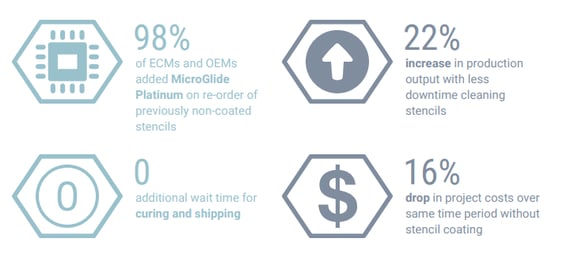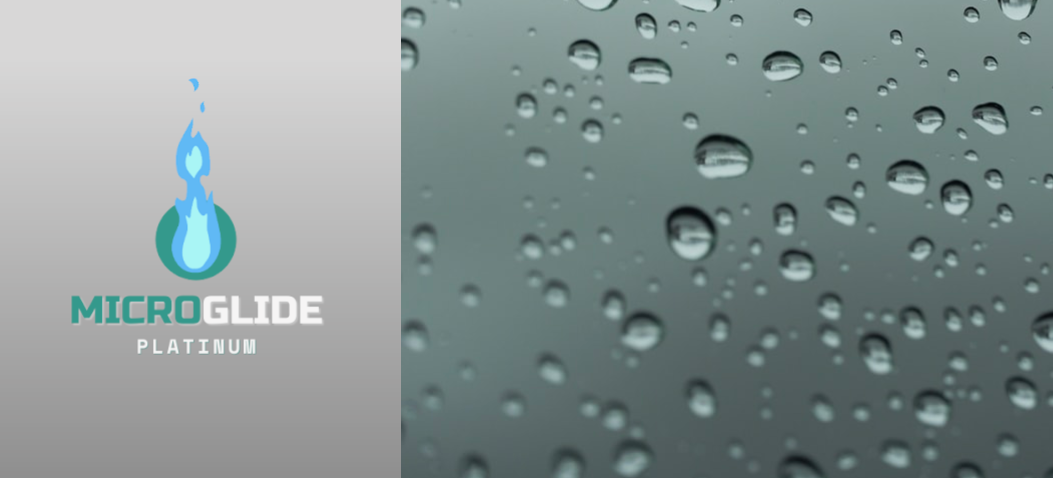Engineers design minimum and maximum tolerances into every stencil, defining the allowable dimensional variation any stencil can carry.
Stacked tolerances - when the accumulated tolerances restrict free movement - are a risk with multi-part mechanical assemblies caused when all of the components are at a high-end of their dimensional limits. A nanocoating can resolve this issue and offer an improvement in the printing process preventing erosion and build-up of debris in the apertures of the stencil.
In a perfect world, every part of the stencil would keep the exact dimensional specifications throughout its production life. Sadly, the world is far from perfect. These specifications define the maximum degree of dimensional variation any stencil can carry. Fundamentally, it's all about costs. Since improved perfection generally will drive manufacturing costs higher, it makes sense to add a coating to the stencil that lowers the overall cost of the entire project and provides the durability needed to reach consistent specifications without the variations.
MicroGlide Platinum is our hydrophobic and oleophobic coating applied to solder paste stencils. This coating provides and guarantees the best performing stencil coating with transfer efficiency and print quality. The robust, chemically-resistant coating is proven to keep the printing process within the tight tolerances of both production and costs.
In 2019, we debuted a product called MicroGlide Platinum. Through multiple testing and surveying our partners using stencils coated with MicroGlide Platinum, we found that:

The Cost of Non-Coated Stencils
Non-coated stencils can be costly. The associated time and energy required to keep non-coated stencils consistent with their tolerance level can be alarming. Increased cleaning and inspection can raise labor costs on a project if unexpected stoppages occur. The stencil can fail in a high-speed production facility causing the production line to shut down and potentially delaying the delivery of the end product and having consequences the customer was not expecting. These stencil could fail through insufficient solder paste release, clogging the apertures or causing the aperture size to be wrong, and increased bridging resulting in additional costs all-around.
The Advantages of MicroScreen and MicroGlide Platinum
Cost Control and Reduction
- Rather than fluctuating expenses and lower revenue on projects, your overall costs are reduced by using a MicroGlide Platinum stencil.
ISO and ITARs Certification
- The Stencil Specialists are trained for a reason - not all stencils are the same. Through our ISO 9001:2015 and ITARs Quality Control, each stencil receives a step-by-step inspection and comes complete with a Stencil Quality Report, MicroGlide Platinum test and guarantee, and Conformance Report.
Heat-fusion, Flame-broiled
- The Stencil Specialists cure the coating in a high-heat oven which bonds the stencil coating to the metal, making it durable and prevents flaking, cracking, or chipping.
The Bottom Line
For stencil design or process engineers and manufacturers, nanocoating's can play a huge role in enhancing the performance and consistency of a stencil. Although numerous challenges can impact the results, the essential issues are understanding the coating application process.
Developing a partnership with a vendor like MicroScreen that understands the coating process will go a long way to improving the quality and consistency of your finished product and improving your relationship with your end customers. MicroScreen and MicroGlide Platinum will help you evaluate and optimize your production process and how to get consistent performance out of your stencils and save on the bottom line.
Contact us today to find out how your business can benefit from
MicroGlide Platinum and MicroScreen.
